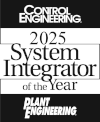
When building a new facility-wide automation system or a control system upgrade, the planning stage is perhaps the most important part; it creates the foundation for the entire project. In-depth planning can set you up for success, whereas poor planning can make the design/build process fraught with issues. You wouldn’t build a house without blueprints, a survey, or licensed contractors, right?
If you start an industrial automation project (or any project) without initial evaluation and design, you could encounter a number of issues that have the potential to negatively impact the project. So, why would you begin engineering, procurement, and construction without a Front-End Engineering and Design (FEED) study? Short answer: you wouldn’t… or at least, you shouldn’t.
What is a FEED Study in an Automation Engineering Project?
A FEED study is designed to help produce all necessary technical documentation, validate hardware and software specifications, and accurately define the project scope. It should be performed before the design phase of the project. A FEED study typically includes:
- Project definition: Setting the project’s objectives, scope, and constraints
- Process design: Defining the process that will be used to produce the new control system or upgrade
- Product selection: Deciding which equipment and software would create the ideal process automation solution
- Cost estimation: Predicting the total cost of the project, including capital costs, operating costs, and contingency costs
- Schedule development: Creating a schedule for the project, including milestones and deliverables
Why is a FEED Study Important in Project Planning?
The FEED study is an important step in the project development process because it helps to ensure that the project (1) is feasible, (2) can be completed within budget and (3) can be delivered on schedule. These studies also help identify any potential risks to the project, which allows you to develop mitigation strategies ahead of time.
There are a number of short and long-term benefits any project could see from a FEED study, most of which involve maintaining timelines and avoiding negative impacts on the projected budget. Here are the four biggest benefits:
1. Reduced Execution Costs Support Internal Funding
Because projects often hinge on a shoestring budget, every penny counts when requesting internal funding. Incorrectly calculating cost has the potential to negatively impact decision making or the project’s progress:
- If material costs are overestimated, it’s easier for a facility to reject the expense, knowing that it isn’t in their current budget.
- If underestimated, it could cause delays as materials run short, pushing the completion date out, impacting other deadlines, and ultimately reducing or delaying ROI.
When proper time and planning is taken to accurately identify the cost of critical componentry and measurable materials, it’s less likely there will need to be any adjustments or changes as everything has been evaluated through data-driven decision making. FEED studies help mitigate the possibility of rework, support the internal funding process, and reduce execution costs over the length of the project.
2. Reduced Technical Issues, Schedule Impacts, & Associated Costs
Hand-in-hand with the reduction of execution and lifecycle costs, the FEED process allows for a more complete iteration of the detail engineering and design schedule.
Just like identifying the correct material costs (by model and quantity), planning the equipment layout and installation provides an earlier opportunity to identify potential technical issues that could impact the construction’s schedule or cost.
Mitigating unforeseen changes to the schedule can keep it from slipping, helping to maintain the originally forecasted completion date and uphold the proposed budget.
3. A More Efficient Process and Plant Start-Up and Handoff
The proper preparation achieved with a FEED study helps accommodate an easier start-up by reducing execution and lifecycle costs and technical issues.
Taking the time upfront to identify and plan for potential challenges – such as delays, design or equipment changes, and inefficiencies – helps prevent issues during construction and installation. This ensures a smoother initial start-up and a more efficient ramp to full capacity. A more efficient start-up means an easier handoff to the client and a better experience overall.
4. More Easily Identify and Mitigate Risk; Environmental, Health and Compliance
Unidentified risks in project planning can halt forward progress, extend critical deadlines, delay project completion, and drastically inflate the originally assessed budget. Finishing over time and over budget is never ideal and can potentially sour a working relationship, making it more difficult to get future projects from a client.
Risk evaluation, especially Health Safety and Environment (HSE), is a large component of the FEED process and is intended to identify and mitigate potential safety risks of any kind that could negatively impact the project. Projects that have a FEED study completed preemptively mitigate unknown risk variables, helping to minimize complications.

All Things Considered, Why Wouldn’t You Do a FEED Study?
While a FEED study isn’t an absolute guarantee that nothing will go wrong during engineering, procurement, and construction, it’s a step in the right direction. When it comes to automation system integration, everything from initial analysis to start-up and beyond depends on mitigating risk, and that’s where the value of a FEED study lies.
When done in advance, this study reduces the likelihood of any potential risks materializing into real problems, minimizes the chances of critical benchmarks being negatively impacted, and helps avoid unplanned resource allocation.
Knowing everything that’s potentially at risk, it would be irresponsible not to take every precaution to ensure success at each step. A FEED study can improve your client’s experience and streamline project development. Work smarter, not harder, right?
